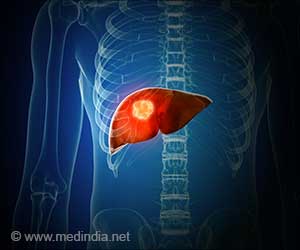Articles on both innovations in rural regions and general articles on technology and innovation are available in the current special issue of Technology and Innovation.

The five papers in this special issue of Technology and Innovation dealing with innovations in rural regions include an editorial, an analysis of the value of networks for European organic farmers and conventional farmers, the use of technology to demonstrate the impact of rural health care organizations, precision agriculture in the Northern Great Plains, and how modern communications technologies are changing communities in Northeast India.
RURAL INNOVATION
Not just about fancy tractors
In her introductory editorial, Kumi Nagamoto-Combs, assistant professor in the Department of Basic Sciences at the University of North Dakota School of Medicine and Health Sciences and a former technology transfer officer in the Office of Intellectual Property Commercialization and Economic Development at the University of North Dakota, suggests that the terms "technology" and "innovation" may not often be associated with rural areas. Yet, as readers of this special issue of the journal will find, the articles are about the use and implementation of information technology in rural communities, including the delivery of remotely acquired information, web-based data management, telecommunications, and distance learning. "In order to help rural regions thrive, it is important to not only develop technologies that target specific needs of particular regions but also to educate the users so they can embrace new ways and utilize them efficiently," she said.
Survey on German organic and conventional farming
Advertisement
Information technology demonstrates impact of rural health care
Advertisement
Precision agriculture comes to the Northern Great Plains
Precision agriculture is defined as the addition of technology and information management to traditional agricultural assets of land, labor, and capital. The use of remote sensing by satellite or unmanned aerial vehicles offers potential for precision crop management, said Xiaodong Zhang, Department of Earth System Science and Policy at the University of North Dakota, and co-authors. Spatial data from satellites – delivered in a timely manner by the Internet – and high resolution, real-time imagery, are among the useful technologies. "We lowered the barrier for end users to understand and learn the technologies effectively from peers as well as professionals," said the authors.
Remote and tribal areas in NE India get E-governance
Northeast India, mostly inaccessible and home to a large number of tribal peoples, has become less remote with the introduction of technologies that help the Indian government to narrow the "digital divide" and the gap between rich and poor. This was accomplished by establishing Community Information Services (CIS), a web-based technology that interfaces the government and the people and aims at improving the health and socioeconomic status of residents. This paper, by Bhaskar Mazumder, Department of Pharmaceutical Sciences at Dibrugarh University, in collaboration with Vijay Swami and Ista Pulu, Research Institute of World's Ancient Traditions, Cultures, & Heritage (RIWATCH), and Yashwant V. Pathak, College of Pharmacy at the University of South Florida, discusses the services and facilities provided by CIS and the impact on education, agriculture, health care, employment, and public policy.
GENERAL SECTION
More than Money
Just how valuable is "technology transfer" for universities? This question is addressed in "More than Money: The Exponential Impact of Academic Technology Transfer," the latest article from the National Academy of Inventors (NAI). The article examines the impact of landmark 1980 legislation that facilitated technology transfer from the academic inventors' "bench" to commercialization and the far-reaching and beneficial changes for universities and communities that have resulted. Valerie Landrio McDevitt, former associate vice president for technology transfer and business incubation at the University of South Florida and current executive director of the Association of University Technology Managers (AUTM), and colleagues, wrote on the benefits to academic institutions, the most significant of which include public benefit, the creation of a vibrant entrepreneurial culture, local economic development, faculty recruitment and retention, student success, and increased prestige for the institution.
Food and Food Additives
Jonas Kamlet, founder of Kamlet Laboratories in 1940, received 81 patents over the ensuing 39 years. Eighteen of those patents involved food and food additives, such as preservatives and food coloring. Authors Dean F. Martin and Barbara B. Martin of the University of South Florida Institute for Environmental Studies, examined his food and food additive patents using records available at the University of South Florida library and write about "…how shrewd he was in writing contracts and generating compensation for his ideas and innovations."
Human Thymus and Infant Deaths
The purpose of this study was to "investigate and quantify the morphological and molecular changes in the thymus for common causes of human infant death." Lead author Mark C. Lloyd, H. Lee Moffitt Cancer Center and Research Institute, Tampa, Florida, and colleagues, who analyzed thymuses from victims of Sudden Infant Death Syndrome and also examined rat thymuses of animals modeled with head trauma, report that "head trauma can lead to a disruption of the thymic, corticomeduallary border and molecular expression patterns in a robust and quantifiable manner."
Ancient Aligned Megaliths and Stone Circle
Human artifacts at Nabta Playa, near the Egypt-Sudan border, include a stone circle and aligned megaliths. An estimated 7,000 years old, the complex appears to have functioned as a ceremonial center during an extended period of reduced aridity in the region. The stone circle points north and at the rising azimuth of the Sun on the summer solstice. The site, said Don Haynie, Department of Physics, University of South Florida, may represent an early effort to mark direction, track time, and measure space – all crucial to technology and innovation as we think of them today.
Commentary: Improving World Infrastucture
Weak intellectual property policy or its enforcement can be a barrier to innovation and creativity in many developing nations, said Alexander Camarota of the Office of Innovation Development, United States Patent and Trademark Office (USPTO). Through its Office of Policy and International Affairs, the USPTO works with intellectual property organizations and foreign governments around the world to help improve the innovation climate for developing nations. The impact of good intellectual property policy is already helping to return value to producers in rural areas as well as aid in cultivating conditions for innovation, wrote Camarota.
The Fourth Annual Conference of the National Academy of Inventors will take place Mar. 19-20, 2015, at the California Institute of Technology in Pasadena, Cal.
Source-Eurekalert


![An Introduction - Indian General [Non-Life] Insurance Companies An Introduction - Indian General [Non-Life] Insurance Companies](https://images.medindia.net/patientinfo/120_100/health-insurance21.jpg)








